Potřebujeme váš souhlas k využití jednotlivých dat, aby se vám mimo jiné mohly ukazovat informace týkající se vašich zájmů. Souhlas udělíte kliknutím na tlačítko „OK“.
ASTM E1746-08
Standard Test Method for Sampling and Analysis of Liquid Chlorine for Gaseous Impurities
Automaticky přeložený název:
Standardní zkušební metoda pro odběr vzorků a analýzu kapalného chlóru pro plynné Nečistoty
NORMA vydána dne 15.12.2008
Informace o normě:
Označení normy: ASTM E1746-08
Poznámka: NEPLATNÁ
Datum vydání normy: 15.12.2008
Kód zboží: NS-42864
Počet stran: 7
Přibližná hmotnost: 21 g (0.05 liber)
Země: Americká technická norma
Kategorie: Technické normy ASTM
Kategorie - podobné normy:
Anotace textu normy ASTM E1746-08 :
Keywords:
analysis, carbon dioxide, carbon monoxide, gas chromatography, hydrogen, inert gases, liquid chlorine, nitrogen, oxygen, Carbon dioxide content, Carbon monoxide (CO), Gas chromatography (GC)--atmospheric analysis/gases, Gaseous environments, Impurities, Inert gases, Liquid chemicals, Nitrogen, Oxygen, Sampling air/atmospheric materials/applications, Sampling chemicals, Sampling gaseous materials/applications, ICS Number Code 71.060.10 (Chemical elements)
Doplňující informace
| Significance and Use | ||||
|
It is very difficult to exclude sample contamination by ambient air during the process of sampling. The levels of atmospheric contamination caused by poor sampling methods are often equal to or larger than the levels of the gaseous impurities present in the chlorine. This results in markedly elevated levels of detected impurities. As specifications become tighter, it becomes more important to measure the gaseous impurity levels in liquid chlorine correctly. Additional problems are experienced in the sampling of liquefied gases for the gaseous impurities. The gaseous impurities reach an equilibrium between the liquid phase and vapor phase in a sample bomb. The quantity of gases measured in any particular sample containing both liquid and vapor will be a function of the amount of vapor space in the sample bomb. This test method avoids the presence of liquid in the sample bomb. |
||||
| 1. Scope | ||||
|
1.1 This test method covers sampling and analysis of liquid chlorine for the determination of oxygen (200 to 400 μg/g), nitrogen (400 to 800 μg/g), and carbon dioxide (800 to 1000 ppm) content at levels normally seen in liquid chlorine. Hydrogen and carbon monoxide concentrations in liquid chlorine are typically at or below the detection limit of this test method. Note 1—The minimum detection limit of hydrogen using a 1 cm3 gas sample and argon carrier gas is 100 to 200 μg/g. The detection limit for the other components is significantly lower. 1.2 The values stated in SI units are to be regarded as standard. No other units of measurement are included in this standard. 1.3 Review the current Material Safety Data Sheets (MSDS) for detailed information concerning toxicity, first aid procedures, and safety precautions. 1.4 This standard does not purport to address all of the safety concerns, if any, associated with its use. It is the responsibility of the user of this standard to establish appropriate safety and health practices and determine the applicability of regulatory limitations prior to use. Specific hazards statements are given in Section 7. |
||||
| 2. Referenced Documents | ||||
|
Podobné normy:
Historická
1.1.2013
Historická
1.5.2010
Historická
1.5.2010
Historická
1.5.2010
Historická
1.5.2010
Historická
1.5.2010
Doporučujeme:
Aktualizace technických norem
Chcete mít jistotu, že používáte pouze platné technické normy?
Nabízíme Vám řešení, které Vám zajistí měsíční přehled o aktuálnosti norem, které používáte.
Chcete vědět více informací? Podívejte se na tuto stránku.


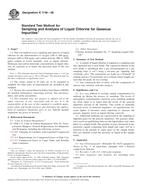
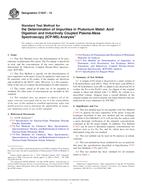 ASTM C1637-13
ASTM C1637-13 ASTM C560-88(2010)e1..
ASTM C560-88(2010)e1..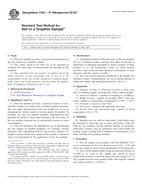 ASTM C561-91(2010)e1..
ASTM C561-91(2010)e1..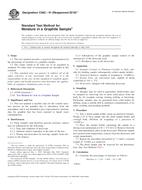 ASTM C562-91(2010)e1..
ASTM C562-91(2010)e1..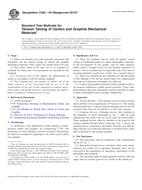 ASTM C565-93(2010)e1..
ASTM C565-93(2010)e1.. ASTM C625-95(2010)..
ASTM C625-95(2010)..
 Cookies
Cookies
